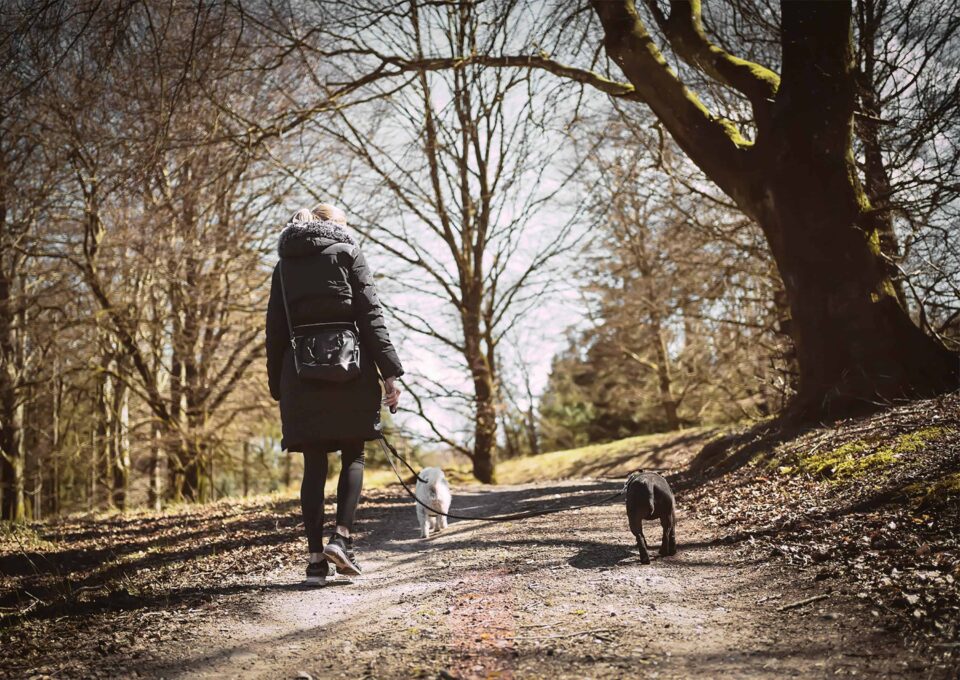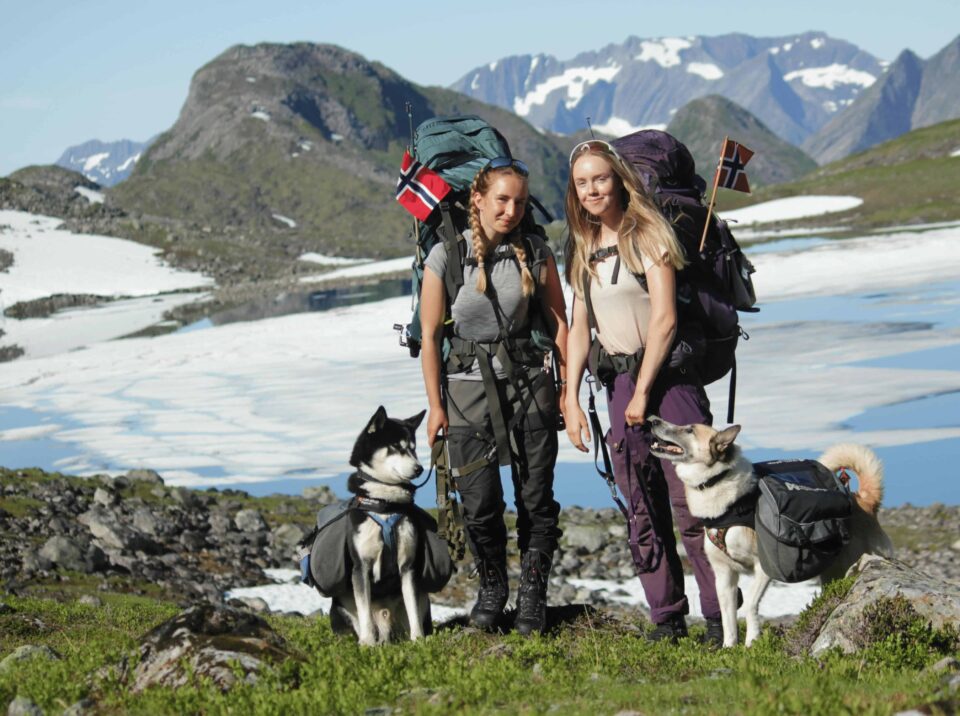Hiking with Dogs: The Ultimate Guide to Keeping Your Pup Healthy and Happy on the Trail
Hiking is a great way to enjoy the outdoors with your dog. Fresh air, exercise, and new surroundings keep them engaged and active. But the trail can bring risks, like rough terrain, extreme weather, and fatigue. Knowing how to prepare helps keep your dog safe and comfortable.
Key Takeaways
- Choose a dog-friendly trail suited to your pup’s fitness level.
- Pack water, food, and basic first-aid supplies for safety.
- Watch for signs of fatigue, overheating, or cold stress.
- Keep paws protected from rough terrain, heat, and cold.
- Always follow trail rules and leash requirements.
Choosing the Right Trail for Your Dog
Not all trails are dog-friendly. Some have restrictions, while others may be too challenging. Look for trails with even ground and moderate difficulty. Avoid rocky paths or steep inclines if your dog is not used to them.
Consider your dog’s breed, age, and fitness level. Some dogs handle long hikes better than others. If it’s your pup’s first hike, start with short, easy trails and build up their stamina over time.
Packing the Essentials for a Safe Hike
Hiking with your dog means carrying extra supplies. Pack enough water for both of you, plus a collapsible bowl. Dehydration can happen quickly, especially in warm weather.
Bring snacks or dog food to keep their energy up. A small first-aid kit with bandages and antiseptic wipes can help with minor injuries. If your dog has sensitive paws, consider booties or balm for protection.
Related: 4 Tips to Keep Your Dog’s Coat Clean
Keeping Your Dog Hydrated and Energized
Water is critical for a safe hike. Dogs can overheat quickly, even in cool weather. Offer water regularly, especially after climbing or running. Avoid letting them drink from streams or puddles, as they may contain harmful bacteria.
Food or treats help maintain energy levels. If you’re out for a long time, plan for a break where your dog can rest and eat. Monitor their energy and adjust your pace if they seem tired.

Protecting Your Dog’s Paws on the Trail
Trail surfaces can be rough on paws. Hot sand, sharp rocks, or icy paths can cause discomfort. Booties help in extreme conditions, but some dogs prefer paw balm instead. If you notice your dog limping or licking their paws, check for cuts or irritation.
Snow and ice can also be harsh. If hiking in cold weather, keep an eye on their paws. If your pup’s feet get too cold, it may be time to head back. Need protection? Try 3-in-1 Paw Ointment for Dogs for extra care.
Understanding Weather Risks for Hiking
Temperature plays a big role in how long your dog can hike. Heat exhaustion is a risk in summer, especially for short-nosed breeds. If it’s too hot for you, it’s too hot for your dog.
Cold weather comes with different challenges. Frostbite can affect paws, ears, and tails. If you’re unsure how cold is too cold for your dog, check their body language. Shivering, lifting paws, or slowing down are signs they need warmth.
Related: Reasons Why You Should Choose Natural Pet Grooming Products
Watching for Signs of Fatigue or Overheating
Dogs don’t always know when to stop. If your pup slows down, pants excessively, or seems distracted, they may be getting tired. Rest breaks help them recover.
Overheating is serious. If your dog’s tongue hangs out far or they refuse to move, they need to cool down immediately. Seek shade, offer water, and stop hiking until they recover.
Leash Rules and Trail Etiquette
Many trails require leashes, even if your dog is well-trained. Always follow local rules to avoid fines and keep wildlife safe. Some areas allow off-leash hiking, but your dog should respond to voice commands.
Respect other hikers by keeping your dog under control. Not everyone is comfortable around dogs. Give space to passing hikers, and always clean up after your pup.
Caring for Your Dog After the Hike
Check your dog for ticks, burrs, or cuts when you get home. Ticks can carry diseases, so remove them quickly. A thorough brushing helps get rid of dirt and loose fur.
Wash their paws to remove mud, salt, or debris. If you notice dry skin or irritation, DermaSkin Ointment can help soothe discomfort. Proper post-hike care keeps your dog comfortable and ready for the next adventure.
Cold Weather Hiking: Extra Precautions
Winter hiking requires extra planning. Dogs lose body heat faster in the cold, especially small or short-haired breeds. If it’s freezing, limit their time outside.
If you’re unsure how long can my dog be outside? check the temperature and wind chill. Cold surfaces can make paws crack, so moisturizing them after a hike helps. A jacket or sweater can add warmth if your pup needs extra protection.

Night Hiking and Low-Light Safety
Hiking in the evening comes with risks, so it is important to keep your pup warm and safe. Visibility is lower, and wildlife is more active. Use a reflective leash, collar, or vest to help others see your dog.
A small light attached to their harness makes them easier to spot. Stay on familiar trails and avoid areas with rough terrain. Always bring a flashlight in case it gets darker than expected.
Wildlife and Trail Dangers
Curious dogs might chase animals on the trail. Make sure to care for your dog by keeping an eye out for snakes, porcupines, or other wildlife. Sudden encounters can lead to injuries or dangerous situations.
Some plants are toxic if eaten. Mushrooms, certain berries, and even some flowers can be harmful. If your dog loves sniffing or chewing, watch what they get close to. Knowing basic animal safety helps prevent accidents.
How to Keep Your Dog Safe and Happy on the Trail
Hiking with your dog is a great way to bond, but safety comes first. Choose trails that fit their fitness level, pack enough water, and watch for signs of fatigue. If it’s too hot or how cold is too cold for your dog, adjust your plans to keep them comfortable.
Need extra protection for their paws? Try 3-in-1 Paw Ointment for Dogs to soothe rough or cracked pads after outdoor adventures. Taking the right precautions makes every hike safe and enjoyable for both of you.
Conclusion
Hiking with your dog is a great way to explore nature, but preparation is key. Paying attention to trail conditions, weather risks, and your dog’s needs ensures a safe and fun experience. Whether it’s a short walk or a long adventure, keeping your pup hydrated, well-fed, and comfortable helps them enjoy the journey.
After the hike, check their paws, clean their fur, and make sure they’re warm and relaxed. A little care goes a long way in keeping them happy and healthy. Want to protect their paws after outdoor adventures? Try 3-in-1 Paw Ointment for Dogs to soothe dry or cracked pads.
~Veterinarian Recommended